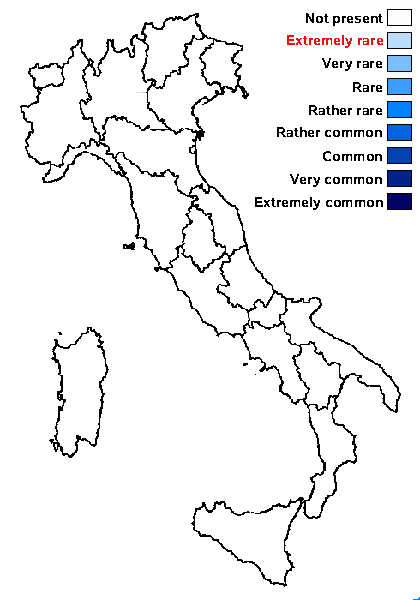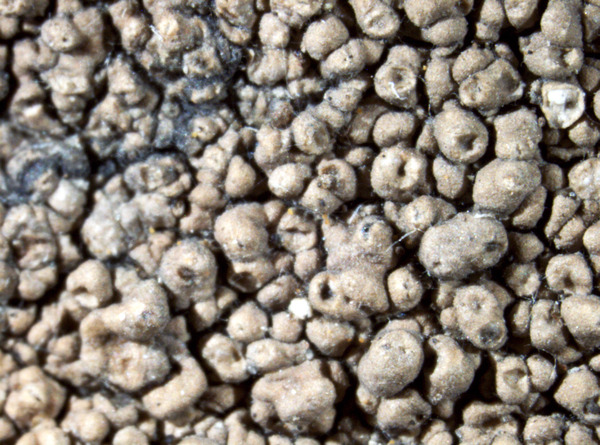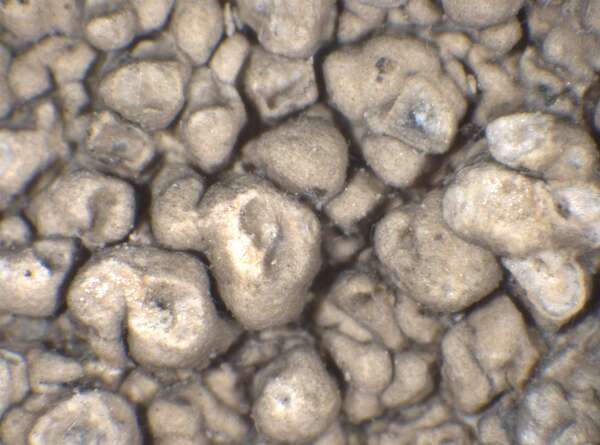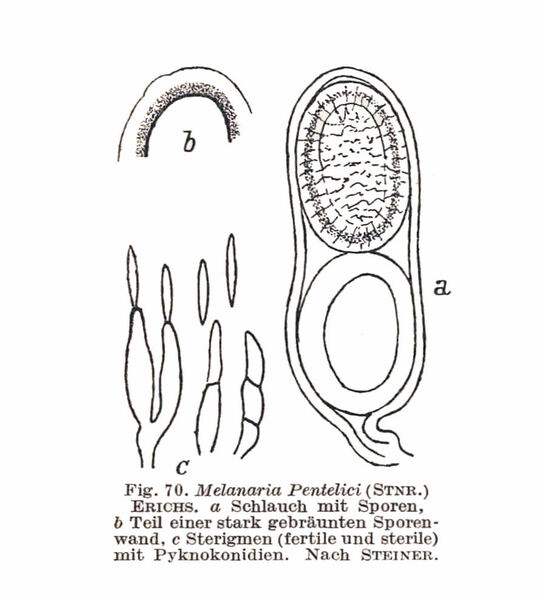Pertusaria pentelici J. Steiner
Sitzungsber. Akad. Wiss. Wien, Math.-naturw. Kl., Abt. 1, 102: 155, 1893.
Synonyms: Melanaria pentelici (J. Steiner) Erichsen
Distribution:
Description: Thallus crustose, episubstratic, pale grey-brown, rather thick, rimose-areolate, the sterile areoles 0.5-1 mm wide, flat to slightly convex. Apothecia immersed into more or less clearly delimited, basally constricted, up to 3(-4) mm wide fertile warts, at first perithecioid, then with expanded discs which unite in discs of second order, surrounded by a thalline margin. Asci 2-spored, broadly cylindrical, the apex with a broad ocular chamber, the outer sheath K/I+ blue, otherwise K/I-, Pertusaria-type. Ascospores 1-celled, at first hyaline, but soon turning grey- or olive-black, ellipsoid, 110-160 x 45-95 µm, the wall 3-layered, the thin outer layer, K-, the inner 2 layers K+ violet-purple. Pycnidia black, immersed. Conidia needle-like, 11-14 x c. 0.5 µm. Photobiont chlorococcoid. Spot tests: thallus K+ yellow turning red, C- or C+ faintly pink, KC+ yellow-red, P+ yellow-orange, UV-. Chemistry: norstictic, gyrophoric and connorstictic acids.Note: a rarely collected silicicolous species known from Greece and Bulgaria, from sea level to the montane belt. To be looked for in Southern Italy.
Growth form: Crustose
Substrata: rocks
Photobiont: green algae other than Trentepohlia
Reproductive strategy: mainly sexual

Predictive model
Growth form: Crustose
Substrata: rocks
Photobiont: green algae other than Trentepohlia
Reproductive strategy: mainly sexual

Predictive model





